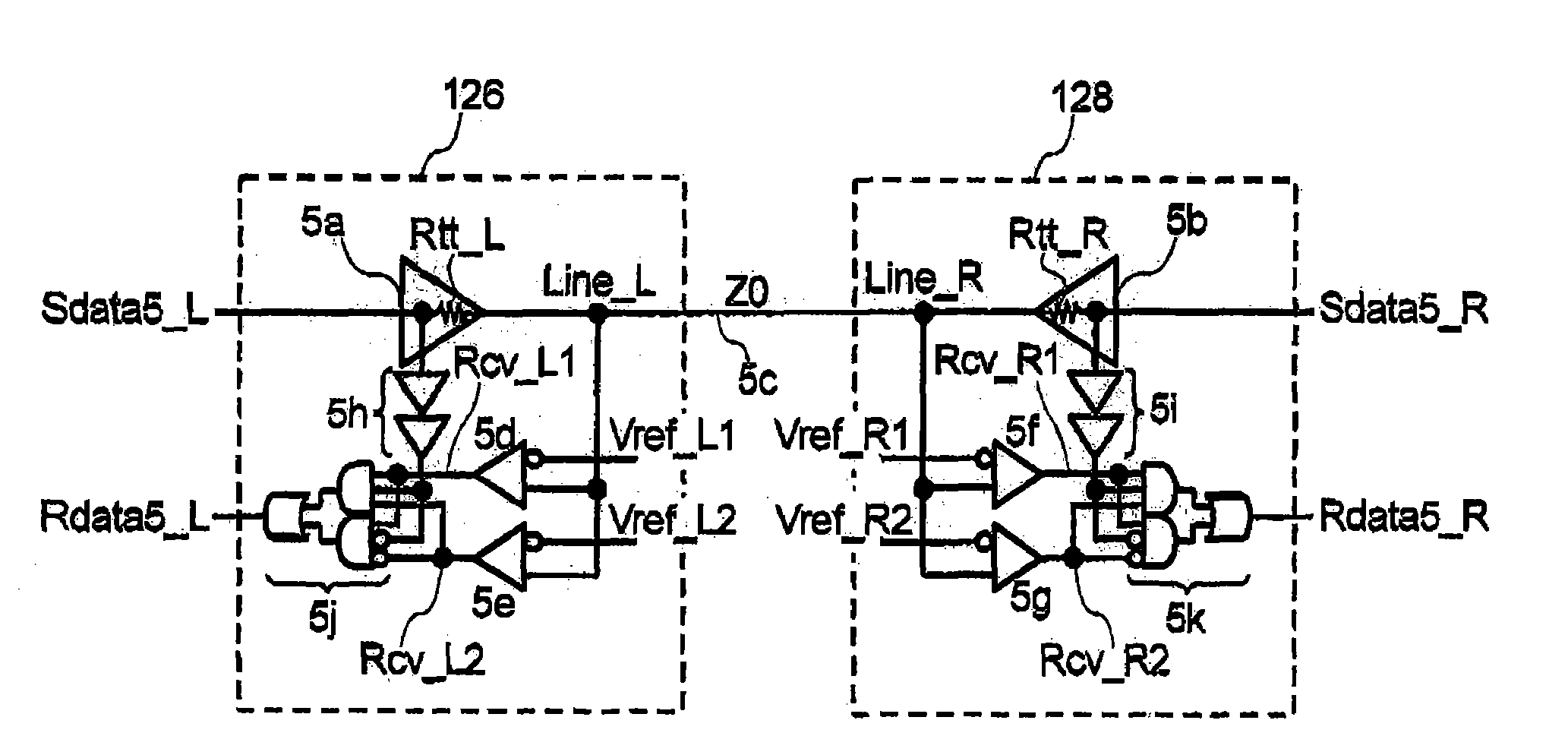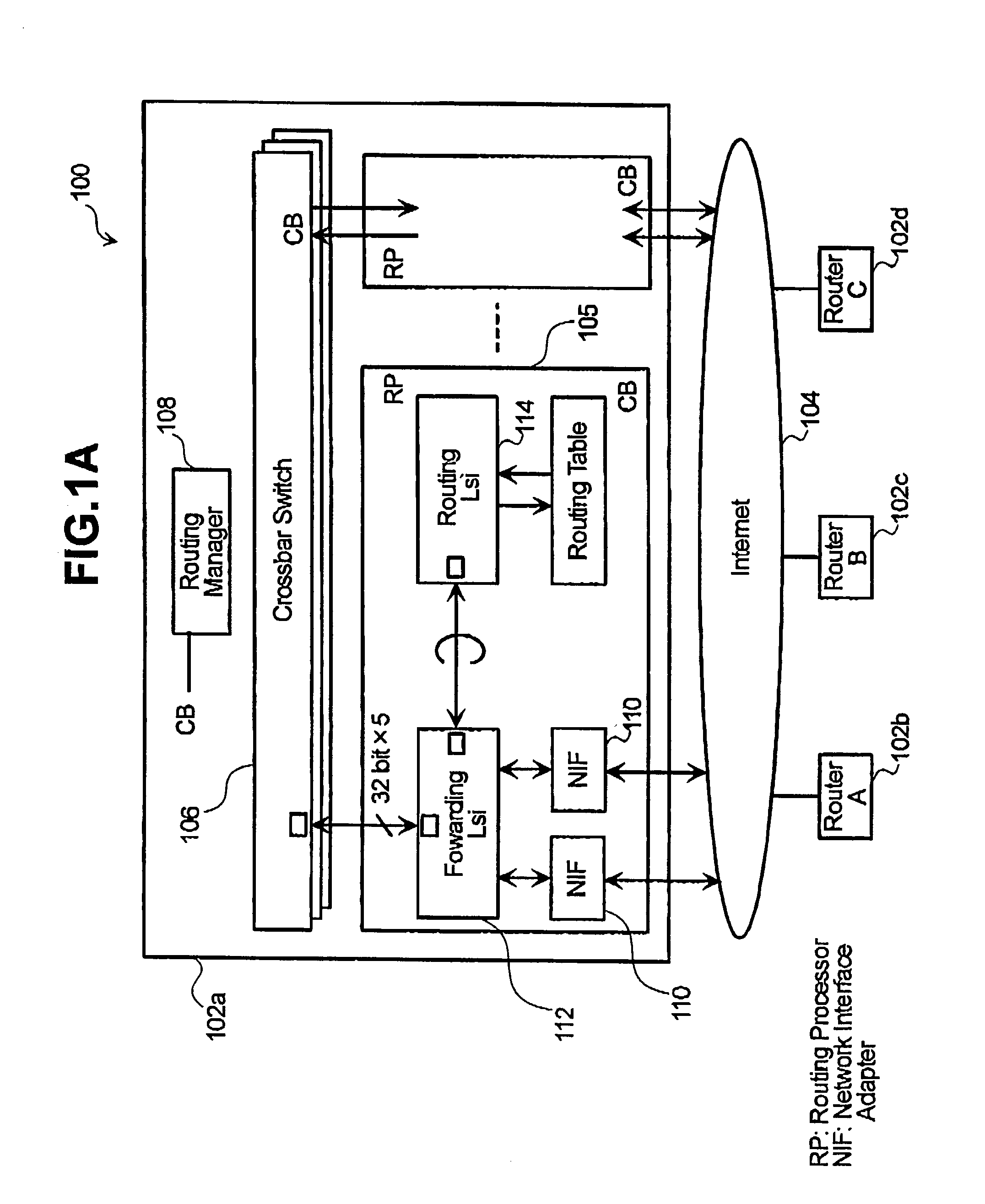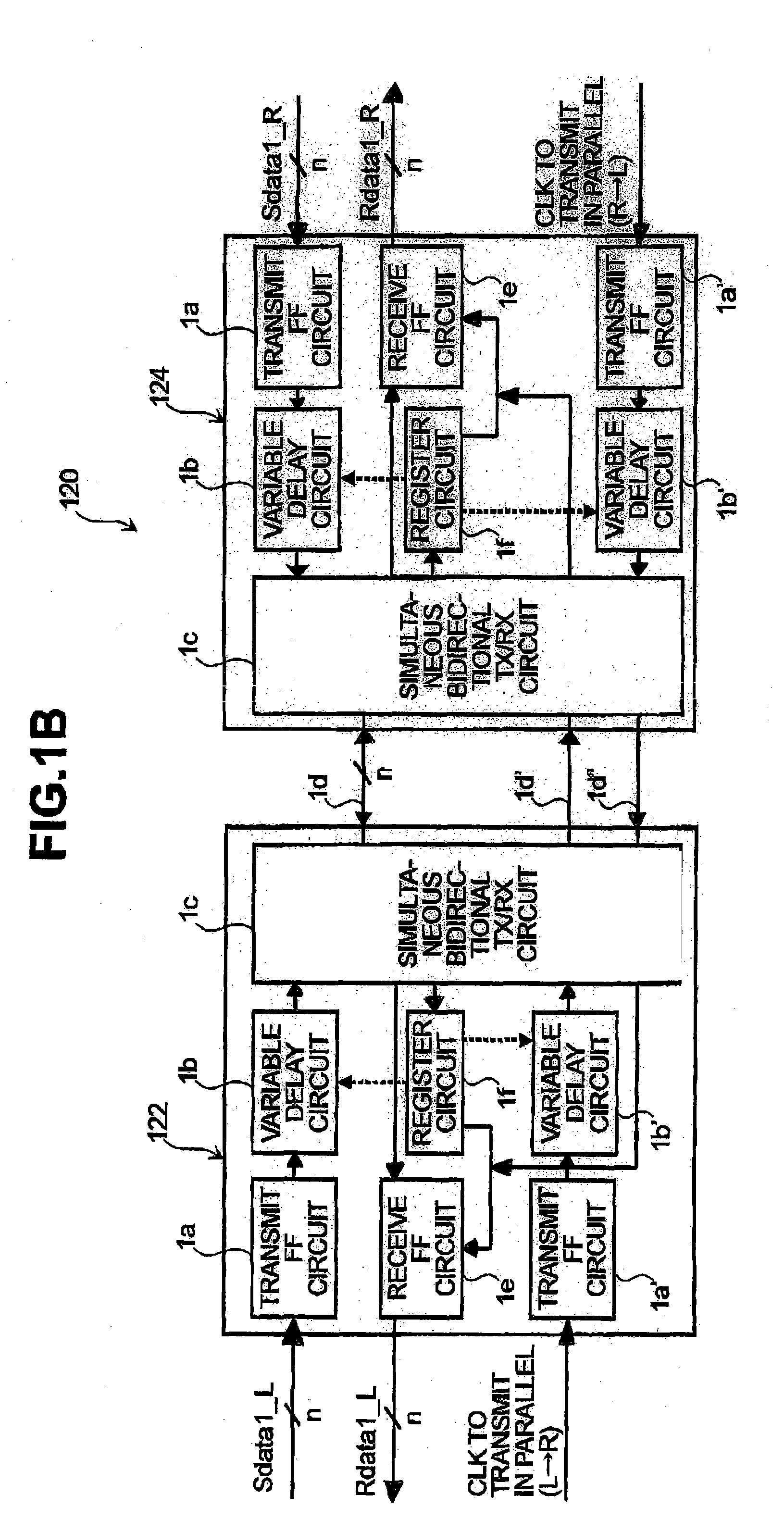Method and system of bidirectional data transmission and reception
a data transmission and reception technology, applied in the direction of data switching networks, synchronisation signal speed/phase control, duplex signal operation, etc., can solve the problems of slow rise or fall time of input signal at home station, delay variation, and receiver inability to compare them properly, so as to achieve higher speed operation and increase the operating frequency. , the effect of increasing the operating frequency
- Summary
- Abstract
- Description
- Claims
- Application Information
AI Technical Summary
Benefits of technology
Problems solved by technology
Method used
Image
Examples
Embodiment Construction
[0040]FIG. 1A illustrates a network system 100 including a plurality of routers 102a-102d and a network 104, e.g., the Internet, linking the routers. The routers may have substantially the same or different configurations. The router 102a is described herein as a representative router.
[0041]The router 102a includes a plurality of routing processors 105 that includes various components used to communicate with other routers 102, a plurality of crossbar switches 106 that transfer data received from one point to another point (e.g., from one routing processor to another routing processor) in the router, and a routing manager 108 that provides information needed by the switches 106 to transfer data.
[0042]The routing processor 105 includes one or more network interface cards or adapters (NTFs) 110 that receive and transmit data to and from the network 104, a forwarding device 112, and a routing device 114. The forwarding device 112 forwards data received from the NIF 110 to the crossbar ...
PUM
 Login to View More
Login to View More Abstract
Description
Claims
Application Information
 Login to View More
Login to View More - R&D
- Intellectual Property
- Life Sciences
- Materials
- Tech Scout
- Unparalleled Data Quality
- Higher Quality Content
- 60% Fewer Hallucinations
Browse by: Latest US Patents, China's latest patents, Technical Efficacy Thesaurus, Application Domain, Technology Topic, Popular Technical Reports.
© 2025 PatSnap. All rights reserved.Legal|Privacy policy|Modern Slavery Act Transparency Statement|Sitemap|About US| Contact US: help@patsnap.com



